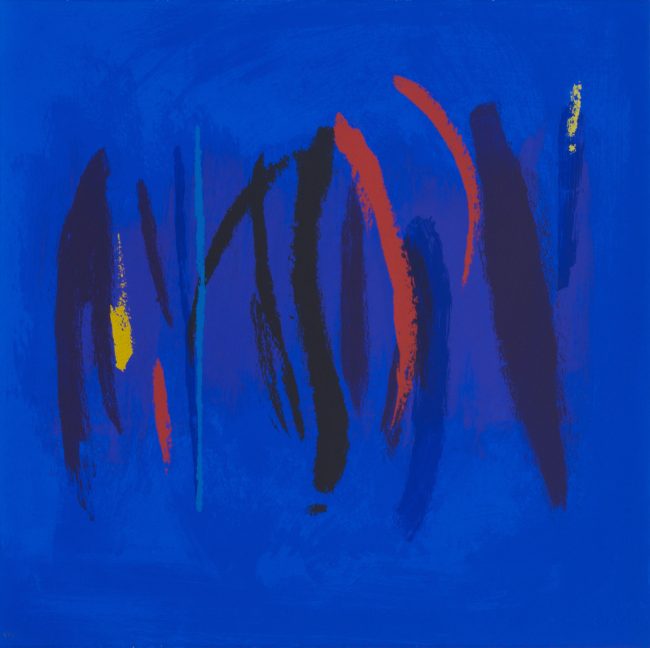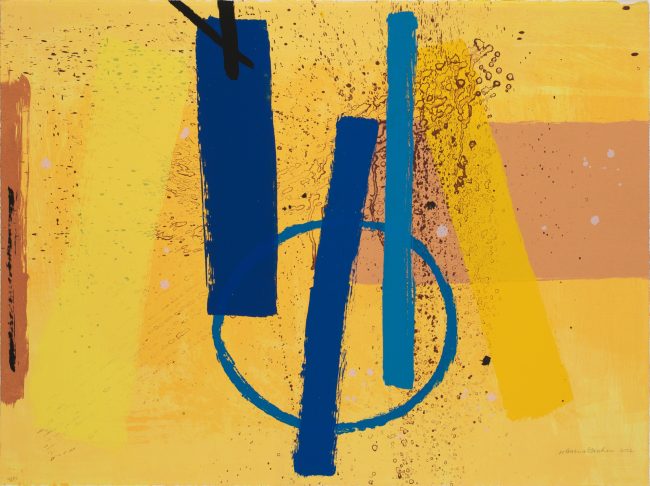
Wind Dance V, 2006, screenprint, edition of 70
Gallagher & Turner are delighted to show a selection of original prints and artworks, by Wilhelmina Barns-Graham (b. Fife, Scotland, 1912 – 2004), one of Britain’s most significant modern artists. The exhibition runs alongside the Hatton Gallery’s major retrospective, Wilhelmina Barns-Graham: Paths to Abstraction, and is presented in partnership with the Wilhelmina Barns-Graham Trust.
Embracing keen observation and experimentation, her work evolved from depictions of landscapes, towns, and geological formations, to striking abstract paintings and prints. These playfully explore colour, mark, form and composition, whilst also relating to natural elements, such as Earth, Wind & Fire. Informed by her condition of synaesthesia, Barns-Graham was attempting to express ‘a total experience’ of these elements. This included the raw emotions that she felt existed within and under the landscape structures, which she saw clearly in colour.

Sunghrie III, 2002, Screenprint, edition of 75
Although Barns-Graham had made the occasional etching and linocut, it was screenprints made with Kip Gresham (Curwen Studio) in 1991 that can be seen as the true start of her life as a printmaker. Then in 1998 Barns-Graham met Carol Roberson and Robert Adam of Graal Press. Developing an instant rapport with Robertson, together they established a collaborative printing process using pioneering water-based inks. Barns-Grahams’ acute sense of colour and colour relationships pushed the medium to its extremes, sometimes using fifteen layers of colour to achieve the right tone. There is, Robertson says, always a perfect balance of colours, with each one having a definite effect on mood.
In her last decade, while in her eighties, Barns-Graham produced an astonishing number of prints. For her, making prints was a liberating experience, one in which she could play with screens as ‘slow paintings’ to create complete series of images. New ideas sprang constantly from these variations.
With Barns-Graham’s individual brush marks captured on acetate, they made prints that are truly an embodiment of the artist’s painting style. She came to move so swiftly, outpacing the printers with whom she collaborated, that several 2003 editions were unsigned at the time of her death while other images remained unprinted. These latter prints, all strictly mapped by the artist, came to be editioned posthumously to enable the completion of the publication ‘The Prints of Wilhelmina Barns-Graham : A Complete Catalogue’ (Lund Humphries, 2007) by Dr Ann Gunn
